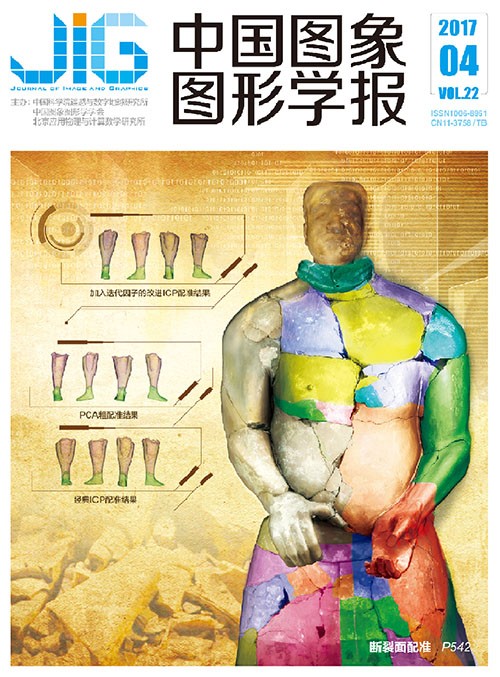
显著图和多特征结合的遥感图像飞机目标识别
摘 要
目的 遥感图像飞机目标的检测与识别是近年来国内外研究的热点之一。传统的飞机目标识别算法一般是先通过目标分割,然后提取不变特征进行训练来完成目标的识别。在干扰较少的情况下,传统算法的识别效果较好。但遥感图像存在着大量的干扰因素,如光照变化、复杂背景及噪声等,因此传统算法识别精度较低,耗时量较大。为快速、准确识别遥感图像中飞机目标,提出一种基于显著图和全局特征、局部特征结合的飞机目标识别算法。方法 首先使用改进的Itti显著算法提取遥感图像中的显著目标;接着使用基于区域增长和线标记算法寻找连通区域来确定候选目标的数量和位置;然后提取MSA(multi-scale autoconvolution)、Pseudo-Zernike矩和Harris-Laplace特征描述子,并使用标准差和均值的比值来评估特征的稳定性,再把提取的特征结合成特征向量;最后应用支持向量机的方法完成对候选目标的识别。结果 实验结果表明,本文算法检测率和识别率分别为97.2%和94.9%,均高于现有算法,并且耗时少,虚警率低(为0.03),对噪声干扰、背景影响以及光照变化和仿射变化均具有良好的鲁棒性。结论 本文算法使用了图像的3种特征信息,包括MSA、Pseudo-Zernike矩和Harris-Laplace特征描述子,有效克服单一特征的缺点,提高了遥感图像飞机目标的识别率和抗干扰能力。
关键词
Aircraft target recognition in remote sensing images based on saliency images and multi-feature combination
Wu Zhe, Zeng Jiexian, Gao Qiqi(Institute of Computer Vision, Nanchang Hangkong University, Nanchang 330063, China) Abstract
Objective The detection and recognition of aircraft targets in remote sensing images has recently become a popular research issue both local and abroad. In traditional methods, invariant features are extracted from segmented targets to train learning machines. In cases with less interference, traditional methods work effectively. In practice, however, several interfering factors, including non-uniform/unstable illumination, complex background, and noise, contaminate the quality of remote sensing images. Thus, traditional methods are time-consuming and cannot achieve high recognition accuracy. To recognize an aircraft target in a remote sensing image rapidly and accurately, this study proposes an aircraft target recognition algorithm based on saliency images as well as global and local features. Method Visually salient targets in a remote sensing image are extracted using the modified Itti algorithm. A region increasing algorithm and a line marked algorithm are both applied to search connected regions, Accordingly, the number and location of candidate targets can be determined. Multi-scale autoconvolution (MSA), pseudo-Zernike moment, and Harris-Laplace feature are extracted, and their stability is evaluated based the ratio of the standard deviation to the mean. The selected features are combined to constitute a feature vector. Lastly, the candidate targets are recognized via support vector machine (SVM).Result Experimental results show that the detection and recognition accuracies of the proposed algorithm are 97.2% and 94.9%, respectively, which are both higher than the values for existing methods. In addition, the proposed algorithm has other advantages, including low time consumption, low false alarm rate (0.03), strong robustness against noise, complex background and affine transformation. Conclusion This study proposes a new aircraft target recognition algorithm based on saliency image as well as global and local features. The combination of the employed features, including MSA, Pseudo-Zernike moment and Harris-Laplace feature, provide more discriminant information than single feature. The novel algorithm improves both recognition efficiency and anti-interference ability.
Keywords
aircraft targets recognition remote sensing image saliency image multi-scale autoconvolution(MSA) invariant moments Harris-Laplace
|



 中国图象图形学报 │ 京ICP备05080539号-4 │ 本系统由
中国图象图形学报 │ 京ICP备05080539号-4 │ 本系统由